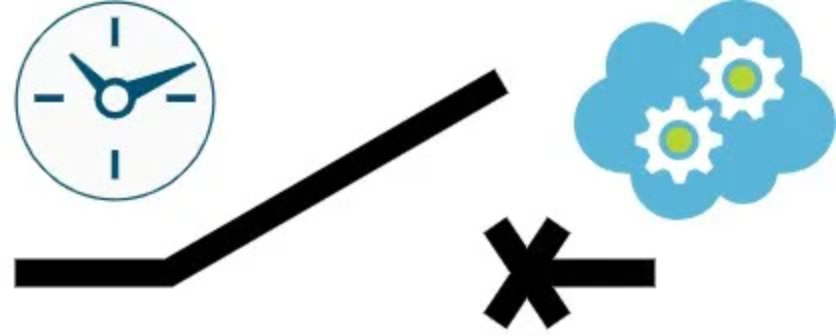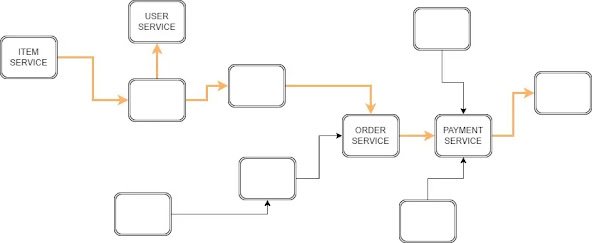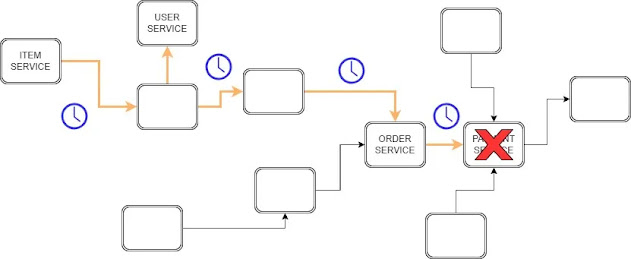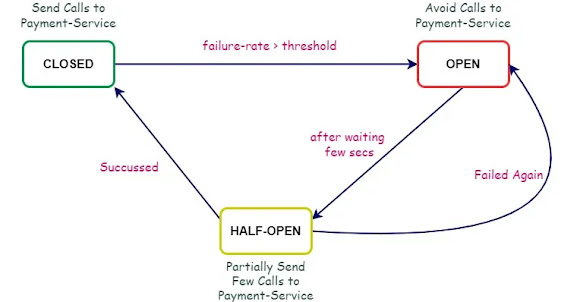Circuit Breaker ⚡ Pattern in Microservices #

Introduction #
In this article, we are going to briefly discuss the circuit breaker design pattern in microservices. Let’s start with a simple example.

Let’s say we have a large-scale system with several microservices. Order-Service and Payment-Service are two microservices among them. After the user clicks the “Complete Order” button, a request will be sent to the backend. In the backend, requests will go through several other services such as User-Service, Item-Service, etc. Finally, the request will go from Order-Service to Payment-Service. Then Payment-Service will process the card details, get the payments done and the payment status will be sent to Order-Service back.
Problem #

However, let’s assume that Payment Service fails to process requests for a while due to some reason such as network issues, unavailability of the service, service failure, etc. Meanwhile, the system receives 10,000 purchasing requests. What happens is, that Order-Service sends each request to Payment-Service using available threads and waits for a response. However, after a few seconds, these requests will be timed out. This will be a huge drawback due to ineffective network, thread, memory, and database allocation for each request. Most importantly this drawback will cascade to all other services, that are involved in this order-processing task.
Solution #
This issue can be easily solved if we could identify, that there is some ongoing issue with Payment-Service. Hence, Order-Service can avoid sending new requests to Payment-Service. Rather it can immediately send a suitable fail response, for incoming new payment processing requests. Now let’s see how we can identify whether Payment-Service is working or not. For this, we can use some statistical techniques along with 3 states.
-
Closed State: In this state, the circuit is closed. This means we send requests to Payment-Service. After receiving a success/failure response from Payment-Service, we calculate the failure rate of the last N requests. If the failure rate > X threshold, then the state will be switched to Open-State. Otherwise, stay in Closed-State.
-
Open-State: In this state, the circuit is open. This means we do not send requests to Payment-Service. We stay in this state for T secs and switch state to Half-Open-State.
-
Half-Open-State: In this state, the circuit is partially closed. This means we send only a few n (n«N) requests and check the failure rate. If it still fails we move back to Open-State or go to Closed-State.
The diagram below explains these three states.

Implementation #
Below is a sample Java code snippet for Circuit Breaker using resilience4j with discussed X, T, N, and n parameters.
// CODE IN ORDER-SERVICE
// Create a custom configuration for a CircuitBreaker
CircuitBreakerConfig circuitBreakerConfig = CircuitBreakerConfig.custom()
.failureRateThreshold(50) // X
.waitDurationInOpenState(Duration.ofMillis(1000)) // T
.ringBufferSizeInClosedState(100) // N
.ringBufferSizeInHalfOpenState(10) // n
.build();
// Build Circuit Breaker
CircuitBreaker circuitBreaker=
CircuitBreaker.ofDefaults("Payment-Service", circuitBreakerConfig);
// Decorate Function
Supplier<String> decoratedSupplier = CircuitBreaker
.decorateSupplier(circuitBreaker, this::callPaymentService);
// Make Call
Try<String> result = Try.ofSupplier(decoratedSupplier);
Likewise, we can use this microservice design pattern called Circuit Breaker Pattern to prevent an application from calling a service, which most likely failed.
For more info please visit Link
Thank You ❤️
Happy Coding 🙌